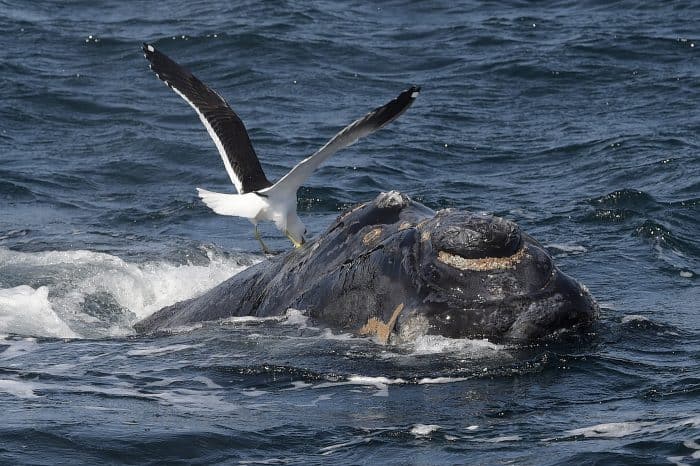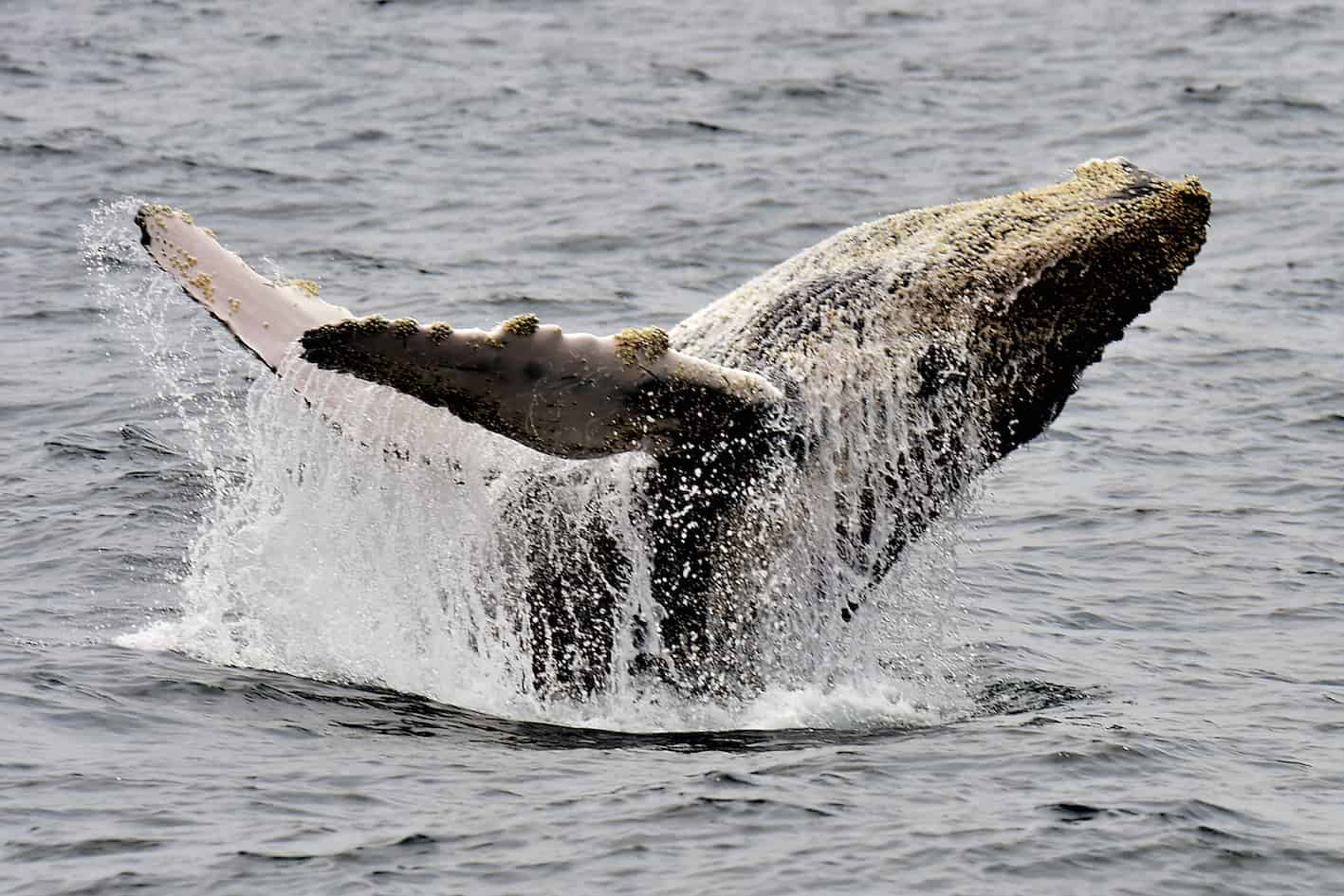The sight of thousands of whales surfacing, jumping and playing off the coast of South America as they migrate toward their breeding grounds is one of nature’s most majestic displays. But global warming is killing off their food and changing their age-old migratory routes.
To the tourists watching a humpback whale frolic with her newborn calf in the tropical waters off Ecuador’s coast near Puerto López, the sight of enormous fins surfacing, tails flipping and blowholes spouting is breathtaking.
The same scenes can be found up and down the South American coast, from Puerto Piramides in Argentina to Cabo Blanco in Perú and Bahía Malaga in Colombia.
But to marine biologists, these huge mammals are not as carefree and healthy as they appear. They are skinny, covered in parasites and exhausted from the increasingly long journeys they are making to reproduce.
“You can see their bones. They’re sick. They have parasites. We never used to see that,” said Ecuadorian marine biologist Cristina Castro as she scanned the horizon for more humpback whales, the species she has studied for the past 18 years.
These whales swim thousands of kilometers each year from Antarctica to the waters around the equator to have their young, which measure three to 4.5 meters at birth and can weigh up to 1 ton. But as ocean temperatures rise, whales are migrating earlier and traveling farther.
Warmer waters are killing off the supply of krill, the small crustaceans that are whales’ main food source in their Antarctic feeding grounds. The whales eat several tons a day to fatten up for their journeys. Rising temperatures also trick the whales’ biological clocks into thinking it is time to migrate.
“They are changing their migration cycles. They used to arrive here in July. Now we see them in May,” said Castro. Whales are also continuing north beyond the equator, as far as Costa Rica — a behavior never seen before, she said.
Reproduction under threat
The International Whaling Commission estimates there were 8,000 to 10,000 humpback whales this year in the Pacific breeding grounds, which stretch from Perú to Costa Rica.
Roger Payne, the American scientist who brought humpback whales’ songs to world attention in the 1970s, said whales are also threatened by the acidification of the oceans caused by rising concentrations of carbon dioxide in the water. Forty-five years of research off Argentina have shown that this and other effects of climate change are killing off whales’ food, he said.
“The females will give birth only when the conditions to feed their young are favorable,” Payne said. “Nothing is nearly as important as the threat that we get from that effect.”
When there are less krill in Antarctica, birth rates drop at the equator, and calves tend to have a worse survival rate. “Everything is linked,” said Payne’s Argentine colleague Mariano Sironi, a specialist in southern right whales.
In the latest alarming news, researchers said Tuesday at least 337 dead whales have been found washed up in a remote inlet in Patagonia in southern Chile — one of the largest die-offs on record.
“It was an apocalyptic sight,” said Vreni Haussermann, one of the scientists who made the discovery on a flyover in June. It is not known what killed the whales, or if the event was linked to climate change.

El Niño
The cyclical warming of the central Pacific — the El Niño phenomenon — is making matters worse and is a harbinger of the dangers to come, researchers said.
El Niño has already caused havoc in the Galapagos Islands off Ecuador, a biodiverse paradise where the weather pattern is blamed for the disappearance of 90 percent of marine iguanas, 50 percent of southern sea lions, 75 percent of penguins and nearly all Galapagos fur seals under three years old.
“Unfortunately, we expect the effects of global climate change to largely reflect those of El Niño,” the Galapagos National Park warned recently.
The park has a massive marine reserve that draws humpback whales, orca, pilot whales, Bryde’s whales and blue whales.
Save that feces!
Researchers are particularly concerned about blue whales, the world’s largest animals, which “show no signs of population increase,” said Barbara Galletti, head of the Whale Conservation Center in Chile.
Whales of all species are also under threat from other human activity, such as collisions with ships and disorientation caused by noise at sea that interferes with their communications. However, an international moratorium has protected them from hunting since 1986.
They have meanwhile become major tourist attractions in many countries along their route. Their survival is fundamental for the health of the world’s oceans. Whale feces contain large amounts of iron that feed the growth of microscopic algae that are essential to the marine food chain.
“That is the feature which keeps the rest of the ocean alive,” said Payne.






